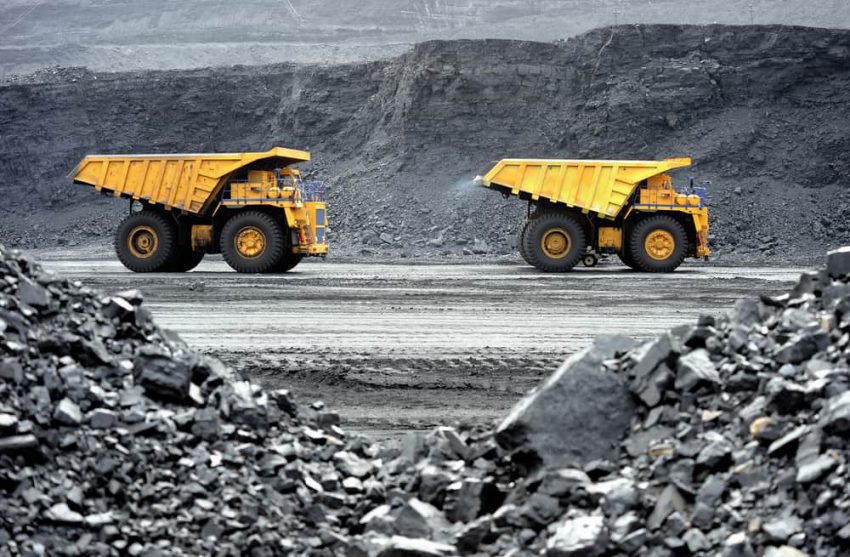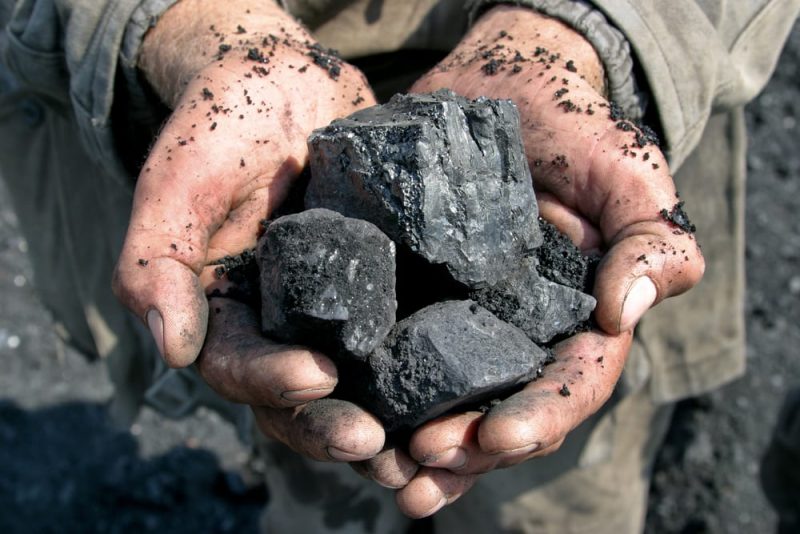There are two types of Coal: carbon of vegetable origin and carbon of mineral origin. Each one is obtained in a different way.
Mineral carbon

This coal is characteristic for its black color. Its origin is the product of the sedimentation of vegetables composed of hydrogen, oxygen and carbon.
The formation of mineral carbon It takes a long time because the decomposition of organic matter is necessary (decomposition of leaves, wood, bark, etc.), which is deposited in marshy or shallow areas, at the bottom of a basin. The decomposition process causes organic matter to become very carbon-rich sedimentary rock used as a fossil fuel.
The coal power It comes from organic matter, for example, from plants that lived millions of years ago, specifically in the Carboniferous period (Paleozoic era). These areas did not allow these organic compounds to decompose since they were covered with a large amount of water and mud, which prevented the passage of oxygen for their putrefaction. However, some anaerobic bacteria (microorganisms that can live without oxygen) caused their decomposition. Thus, a large number of decomposed plants accumulated over millions of years.
There are different types of mineral coal.
- Peat. It is a type of mineral coal of recent formation. It is fluffy and light, and. It has the lowest percentage of carbon compared to the rest of the mineral carbons. In addition, it has a high percentage of moisture and, after combustion, leaves a high degree of ash.
- Lignite. Composed of 50% to 75% carbon, this charcoal has a matte black coloration, which indicates that touching it stains the skin. Like peat, this mineral coal produces a lot of ashes when burned.
- Coal. Its quality is superior to the previous ones: it is composed of 75 to 90% carbon.
- Anthracite. This type of coal is the most sought after since it is considered to be of better quality: it has between 90% and 97% carbon. However, it is the one that requires the longest training time.
How is coal obtained?

To obtain mineral coal, two methods: open pit mining or underground mining.
- Opencast mining. This method can only be used when the coal bed is less than 60 meters away. Layers of rock and earth are removed and thus the coal is left uncovered.
- underground mining. Also known as “deep mining”, it is used when coal deposits are hundreds of meters below the ground. In this case, tunnels and elevators are built to transport the extracted coal, as well as the transport of personnel.
What is coal used for?
Mineral coal is used for the production of thermal energy. However, this use has decreased because it was replaced by oil. On the other hand, mineral coal was used during World War II for the manufacture of cement and bricks. It is currently used for the production of electrical energy.
Charcoal
This carbon is obtained by carbonization From the wood. The trees from which charcoal can be produced are: oak, beech, willow, coconut shells, eucalyptus, black poplar and pine, among others.
In furnaces whose temperature exceeds 500° and in the absence of oxygen, it is possible to obtain the charcoal. This charcoal contains about 98% carbon, is porous, and is solid but brittle.
What is charcoal used for?
Charcoal can be used for relieve cases of poisoning, nausea, vomiting, diarrhea, gas, heartburn, gastric reflux, sore throat, toothache, and gum infection (in this case, activated charcoal). Externally it is used to relieve the sting of bees, insects, snakes and arachnids, skin infections or dermatitis due to contact with poisonous plants, eye or ear infections.
In addition, charcoal is widely used as domestic fuel for cooking or for the operation of heating equipment.
